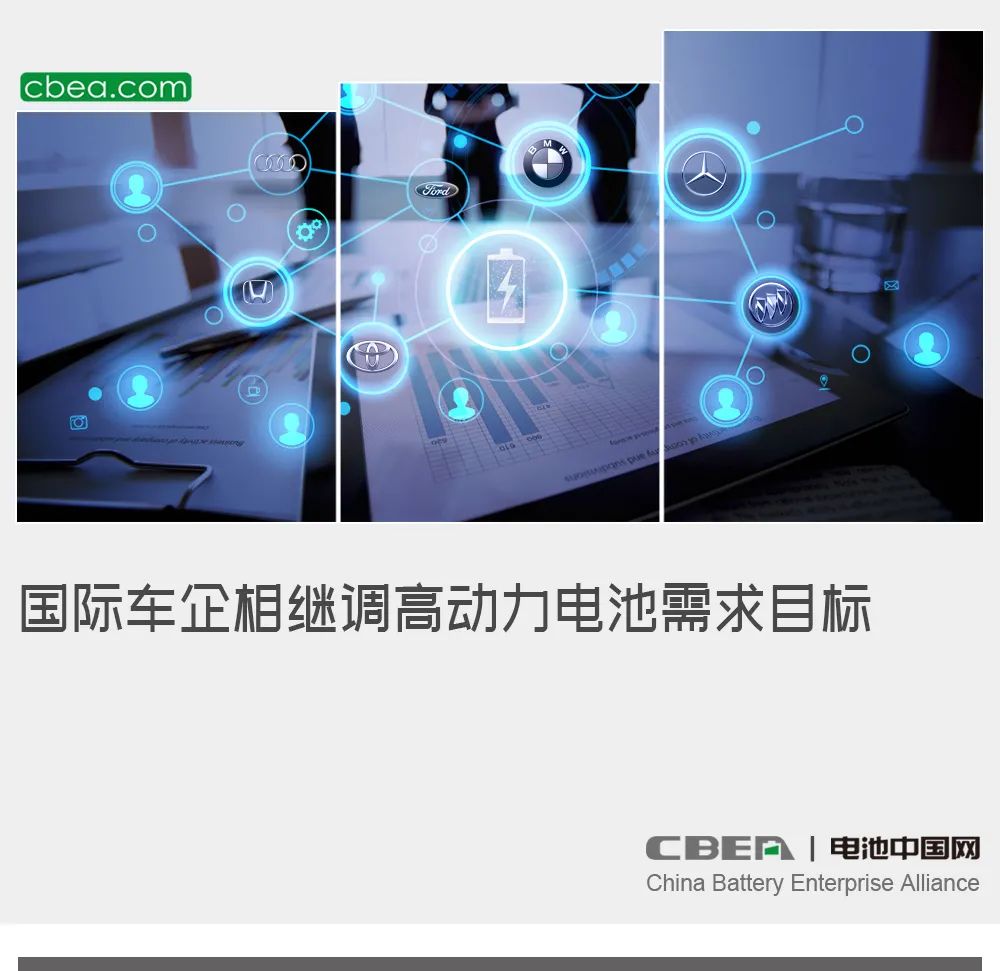International car companies have successively raised their demand targets for power batteries
 Under the pressure of carbon neutrality, the layout of international car companies in electrification continues to increase. This situation is mainly reflected in the continuous revision and improvement of investment targets of international car companies in the field of vehicle electrification.
Under the pressure of carbon neutrality, the layout of international car companies in electrification continues to increase. This situation is mainly reflected in the continuous revision and improvement of investment targets of international car companies in the field of vehicle electrification.
On March 2, South Korea's Hyundai Motor announced that it plans to invest about 95.5 trillion won (about 79.21 billion U.S. dollars) by 2030, of which about 19.4 trillion won (about 16.1 billion U.S. dollars) will be invested in electric vehicle-related businesses. About 20% of the total investment. According to people familiar with the matter, Hyundai Motor's investment of about 16.1 billion US dollars in electric vehicle-related businesses will cover the construction of new factories, charging station construction, and strategic cooperation with battery companies.
Hyundai Motor's goal is that by 2030, its brand's share in the global electric vehicle market will reach 7%, and the annual sales target will reach 1.87 million units, "1.87 million electric vehicles are expected to require batteries of 170GWh, and Hyundai will compete with the world's top batteries. Enterprises strengthen cooperation." The day before Hyundai Motor announced its 2030 strategy, Stellantis Group released a long-term strategic plan called "Dare Forward 2030". Stellantis Group plans to launch more than 75 pure electric models in 2030 and sell more than 5 million pure electric vehicles worldwide. Stellantis' goal is that by 2030, anew cars sold in the European market will be electric vehicles; in the US market, pure electric vehicles will account for more than 50% of new cars.
According to foreign media reports, Ford Motor launched a restructuring plan on March 2 to split its electric vehicle and diesel locomotive businesses to promote the rapid growth of the electric vehicle business. The restructured Ford will invest an additional $20 billion on a previously announced $30 billion electrification investment to accelerate the development of its electric vehicle business, sources said.
Earlier, in January this year, the Renault-Nissan-Mitsubishi alliance unveiled a number of joint projects and development initiatives for the future to 2030. In this "joint development roadmap", the Renault-Nissan-Mitsubishi alliance plans to invest 23 billion euros in electrification over the next five years, and plans to launch 35 new pure electric models on five pure electric platforms by 2030. 90%.
In its 2030 goal released in December last year, Toyota proposed that by 2030, Toyota's global sales of electric vehicles will reach 3.5 million units per year. Just 2 million.
Driven by the pressure of carbon emission reduction and the transformation of the automobile industry, since 2020, many international mainstream car companies, including Tesla, Volkswagen, BMW, Toyota, Honda, GM, etc., have released their investment plans for electrification. The scale has exceeded 370 billion US dollars.
After Volkswagen released its comprehensive electrification strategy last year, it also raised its power battery demand target in the European market, hoping to build 6 large battery factories in Europe by 2030, with a power battery production capacity of 240GWh.
A relatively obvious phenomenon is that since 2020, with the gradual increase in the penetration rate of electric vehicles and the maturity of battery technology, under the pressure of carbon emission reduction, domestic and foreign mainstream car companies have become more and more "bold" in electrification goals. At the same time, the speed of electrification is also accelerating. With the rapid advancement of the electrification strategy of the global mainstream car companies, the future development of the power battery industry will also have various impacts.
1. The demand for power batteries is highly certain, and the electrification of car companies will gradually absorb the production capacity of battery companies.
According to data from Minmetals Securities, according to incomplete statistics, by 2025, the planned lithium battery production capacity of global battery companies will reach 4,725GWh, of which only Chinese companies will reach 3,900GWh. This production capacity includes automotive power batteries, energy storage batteries, etc. Among them, power battery production capacity is expected to account for more than 70%.
Previously, the industry was worried that a new round of overcapacity would occur with such a scale of capacity planning. However, from the perspective of the speed of global vehicle electrification, this concern may be eliminated. Volkswagen, GM, Stellantis, Hyundai, Toyota and other car companies have successively adjusted the sales ratio and target of electric models, driving the demand for power batteries is expected to grow significantly .
From the perspective of the market, the penetration rate of new energy vehicles in the Chinese market in 2021 has exceeded 10%, and the sales volume will reach 3.52 million. This year, the industry generally predicts that the sales volume will exceed 5.5 million, and there are even optimistic forecasts that it will exceed 6 million, and the penetration rate may exceed 20% in advance.
Second, the global layout of power batteries needs to be accelerated, and the global battery capacity demand of international car companies is obvious.
The vehicle manufacturing of international car companies is generally characterized by globalization, and large-scale electric vehicle manufacturing in the future will also require more nearby battery supporting capabilities. For example, the Stellantis Group said that the European market will account for about 250GWh of the 400GWh capacity demand by 2030, and the North American market will account for 150GWh; Volkswagen's battery demand in the European market will also have 240GWh, and the demand in Asia and the United States is also considerable; GM, Ford, Toyota, Hyundai's vehicle production bases in the United States, Europe, and China also require suppliers to have global layout capabilities.
Overseas battery companies such as LG New Energy, Panasonic Battery, SK on, and Samsung SDI have already deployed global production capacity, and have taken the lead in winning cooperation orders from many international car companies. Up to now, domestic battery companies CATL, Honeycomb Energy, Funeng Technology, and Envision Power have all deployed their production capacity overseas, and it is expected that there will be domestic battery companies going abroad in the future.
3. Mainstream car companies and core battery suppliers will accelerate the arrival of the era of battery standardization.
From the perspective of reducing manufacturing costs and improving safety and reliability, with the accelerated entry of international mainstream car companies, batteries will gradually become "standardized", and this standardization requires the joint promotion of car companies and battery companies.
Last year, Volkswagen launched a "standard battery" on its "Power Day". According to Volkswagen's plan, this battery will cover 80% of its models in the future and be compatible with a variety of battery materials, making its manufacturing cost affordable. Reduced by about 50%; Hyundai Motor also stated that the battery system of its electric vehicle platform will be standardized in the future, and the current battery-module battery process will be changed to a battery-packaging process to improve battery energy density and reduce costs. In addition, GM and LG New Energy jointly developed the Ultium battery system, which will also cover most of GM's models in the future.
From the perspective of manufacturing efficiency, manufacturing cost and large-scale production, the standardization trend of power batteries will accelerate in the next few years. The battery companies that take the lead in cooperating with car companies to develop battery standardization are expected to enjoy the first wave of dividends, and even have a greater impact on the industry structure.
It should be pointed out that battery standardization will be dominated by different car companies in the future, or will produce different "standards", not the same standard. However, this standard will gradually replace most of the current specifications, and several standards will coexist.
In addition, with the acceleration of the electrification of mainstream car companies, based on the considerations of safety, cost reduction, supply guarantee, and carbon reduction, the investment and layout of the entire battery industry value chain in the future is expected to be the focus of car companies and battery companies.










